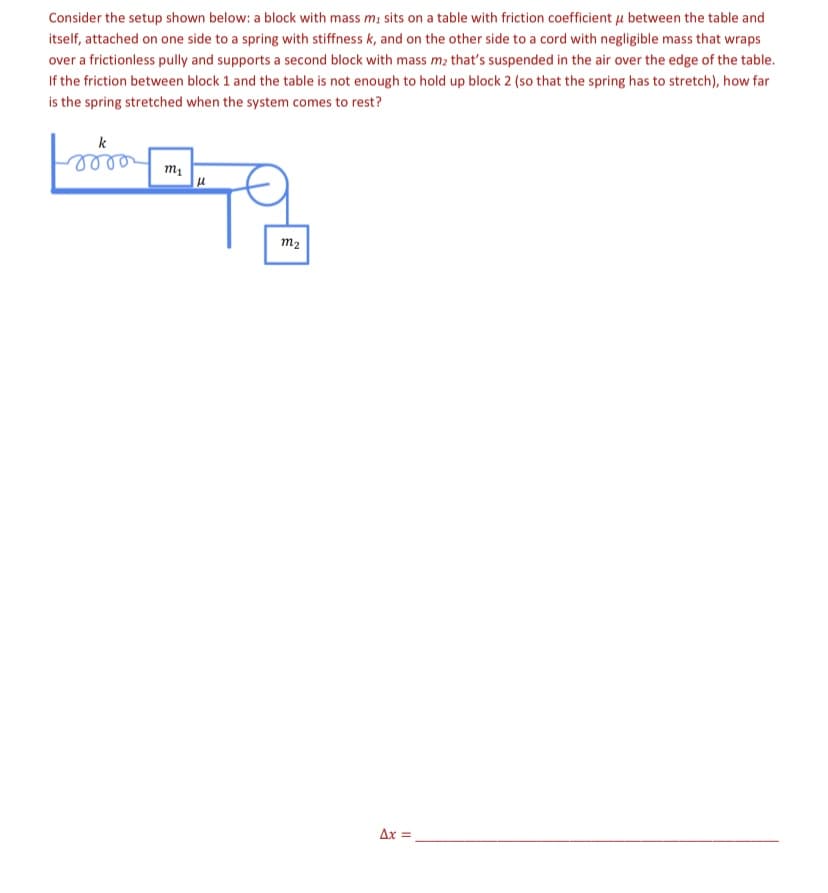Consider the setup shown below: a block with mass m; sits on a table with friction coefficient u between the table and itself, attached on one side to a spring with stiffness k, and on the other side to a cord with negligible mass that wraps over a frictionless pully and supports a second block with mass m; that's suspended in the air over the edge of the table. If the friction between block 1 and the table is not enough to hold up block 2 (so that the spring has to stretch), how far is the spring stretched when the system comes to rest? sell m1 m2
Simple harmonic motion
Simple harmonic motion is a type of periodic motion in which an object undergoes oscillatory motion. The restoring force exerted by the object exhibiting SHM is proportional to the displacement from the equilibrium position. The force is directed towards the mean position. We see many examples of SHM around us, common ones are the motion of a pendulum, spring and vibration of strings in musical instruments, and so on.
Simple Pendulum
A simple pendulum comprises a heavy mass (called bob) attached to one end of the weightless and flexible string.
Oscillation
In Physics, oscillation means a repetitive motion that happens in a variation with respect to time. There is usually a central value, where the object would be at rest. Additionally, there are two or more positions between which the repetitive motion takes place. In mathematics, oscillations can also be described as vibrations. The most common examples of oscillation that is seen in daily lives include the alternating current (AC) or the motion of a moving pendulum.

Trending now
This is a popular solution!
Step by step
Solved in 2 steps with 2 images




